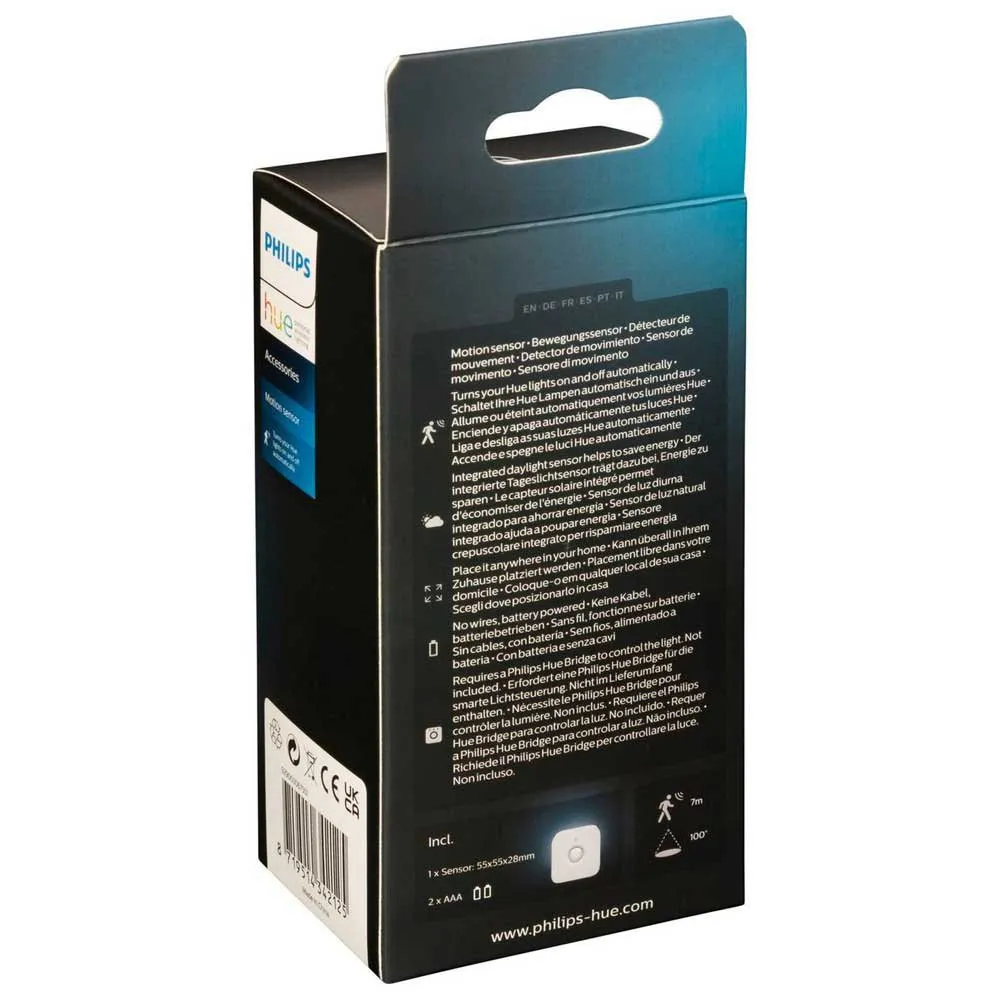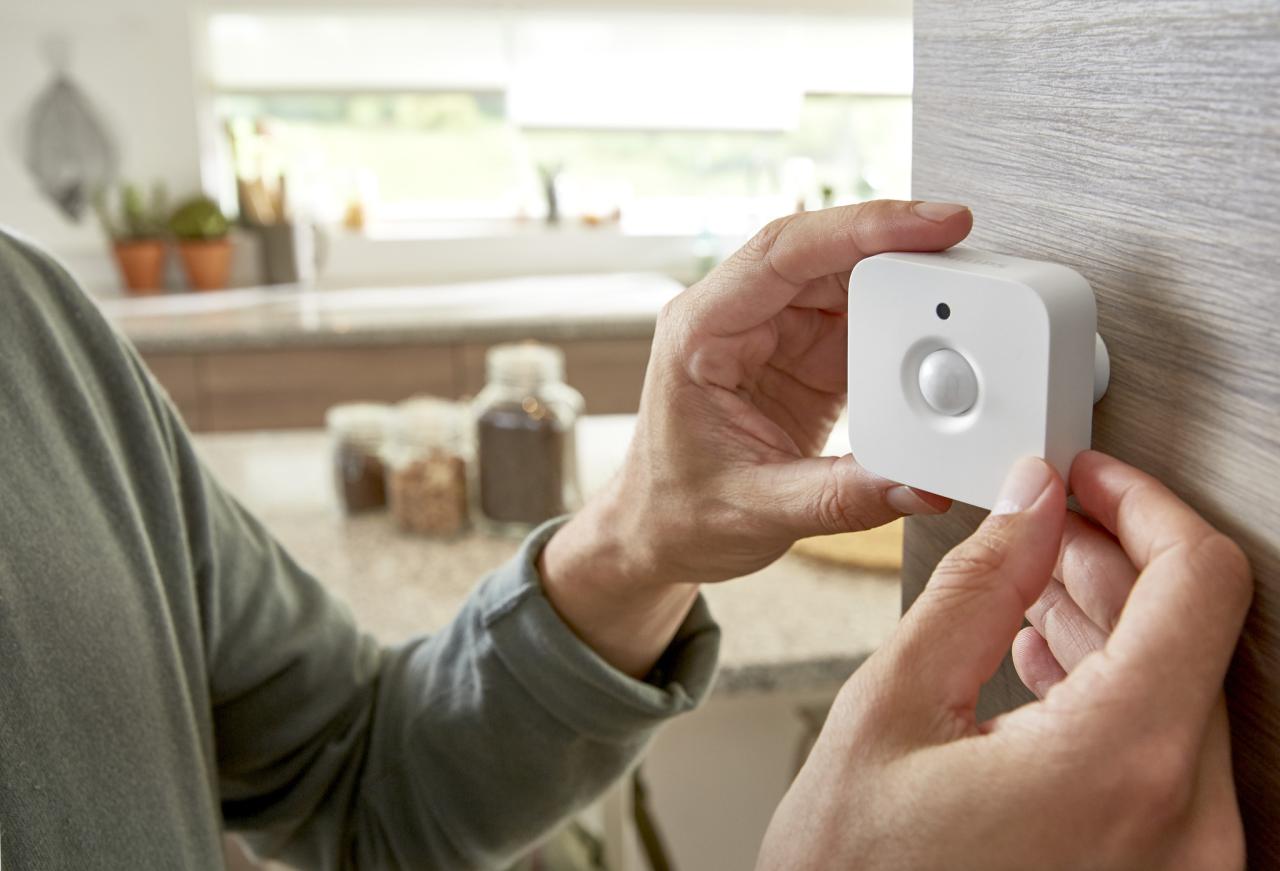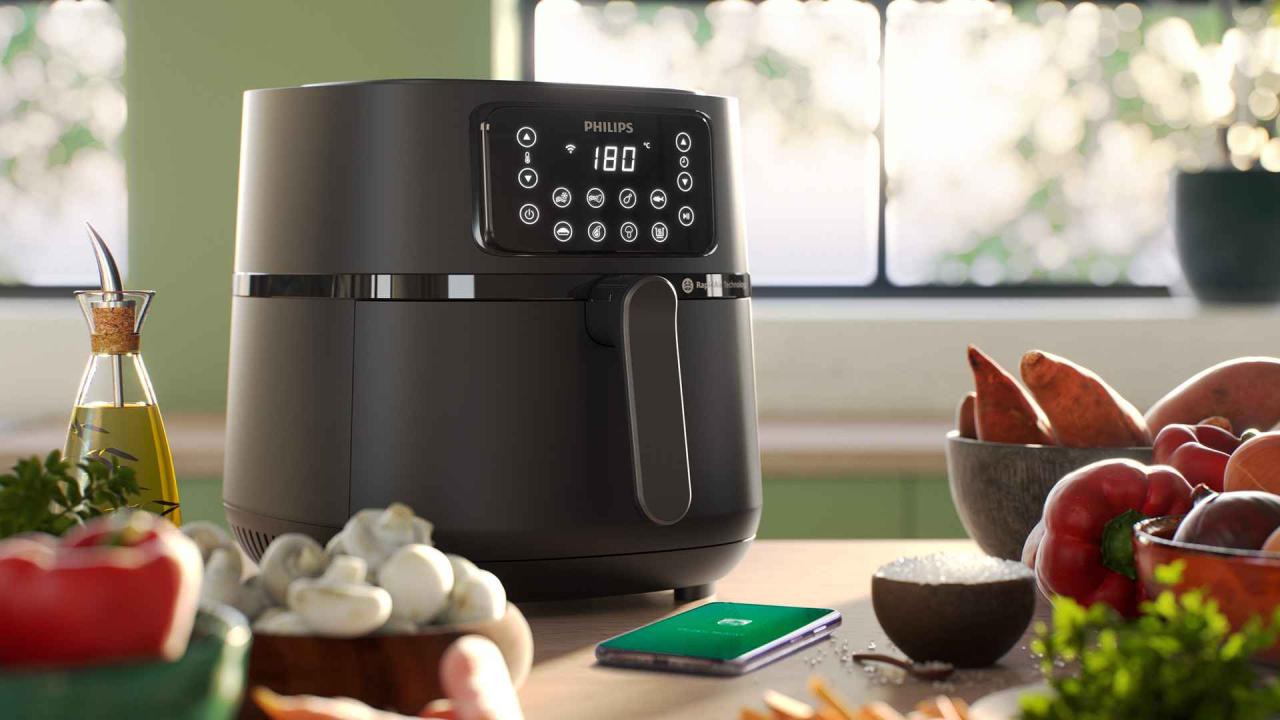With motion sensor philips hue leading the charge, smart lighting has never been more intuitive and seamless. These advanced devices not only enhance convenience but also elevate your home ambiance by responding to your movements. Imagine walking into a room and having the lights adjust automatically to your presence, creating the perfect atmosphere without a single touch.
Understanding how motion sensors work within the Philips Hue ecosystem reveals the impressive technology behind their functionality. With their ability to detect movement and integrate with various smart home setups, these sensors offer significant advantages, from energy savings to enhanced security, making them a must-have for any modern home.
Motion Sensor Functionality

The motion sensor functionality in Philips Hue products revolutionizes the way we interact with smart lighting systems. By integrating advanced technology into everyday environments, these sensors provide convenience, efficiency, and enhanced safety. The seamless interaction between motion detection and lighting response creates an intuitive experience for users, making it an essential component of modern smart homes.
Philips Hue motion sensors operate based on passive infrared (PIR) technology, which detects changes in heat emitted by moving objects. When a person enters the sensor’s range, the heat signature is identified, triggering a response in the connected lighting system. This allows lights to automatically turn on when motion is detected and switch off after a predetermined period of inactivity, effectively optimizing energy consumption and enhancing user convenience.
Advantages of Using Motion Sensors in Smart Lighting Systems
The implementation of motion sensors in smart lighting offers several advantages that improve both functionality and user experience. These benefits include:
- Energy Efficiency: By ensuring lights are only activated when needed, motion sensors significantly reduce energy waste and lower electricity bills.
- Enhanced Security: Automatic lighting upon sensing movement can deter intruders and provide safety in dark areas, enhancing overall home security.
- Convenience: Users no longer need to manually turn lights on and off; the system responds to natural movements, making it especially useful for people with disabilities or when carrying items.
- Customizable Settings: Philips Hue motion sensors allow users to set specific preferences, such as adjusting the activation range and duration for which lights stay on after motion is detected.
- Integration with Other Smart Devices: The motion sensors work seamlessly with other Philips Hue products and compatible smart home devices, enabling a holistic home automation experience.
Technology Behind the Motion Detection of Philips Hue Sensors
The technology utilized in Philips Hue motion sensors is sophisticated and reliable. The key features include:
– Passive Infrared (PIR) Detection: This technology allows the sensors to recognize heat emitted from human bodies, ensuring precise motion detection even in low-light conditions.
– Wide Detection Range: Philips Hue sensors typically have a detection range of up to 5 meters, with an adjustable angle to cover expansive areas for more significant effectiveness.
– Smart Connectivity: Utilizing Zigbee protocol, these sensors communicate with the Philips Hue Bridge and other compatible devices for synchronized control, creating a robust network of smart lighting.
– User-Friendly Setup: The sensors can be easily mounted on walls or placed on surfaces, and they are simple to configure using the Philips Hue app, allowing for quick customization.
– Battery Efficiency: Designed for prolonged use, the motion sensors operate on battery power, ensuring that they remain functional without being tethered to electrical sources, further enhancing their versatility.
The integration of these technologies makes the Philips Hue motion sensor a powerful tool in the realm of smart lighting, providing not just functionality, but also contributing to energy efficiency and security in homes.
Installation and Setup

Setting up your Philips Hue motion sensors is essential for optimizing smart home automation. Follow this straightforward guide to ensure effective installation and integration with other smart devices. The Philips Hue motion sensor enhances your lighting experience by enabling motion detection, allowing you to customize your home lighting based on your activity.
Step-by-Step Installation Guide
To successfully install your Philips Hue motion sensors, adhere to the following steps:
1. Choose the Location: Select an area with high foot traffic or where automatic lighting would be beneficial. Ideal placement is typically near entrances or hallways.
2. Prepare the Wall: Ensure the wall surface is clean and dry. This will help in affixing the sensor securely.
3. Use the Mounting Plate: Attach the provided mounting plate to the wall using screws or adhesive pads, depending on your preference.
4. Attach the Sensor: Once the plate is secured, snap the motion sensor onto the mounting plate.
5. Power On: Ensure the sensor is powered; the LED indicator will flash to confirm it is ready for setup.
6. Connect to Hue Bridge: Open the Philips Hue app on your smartphone. Go to ‘Settings’ > ‘Accessory Setup’ > ‘Add Accessory’, and follow the onscreen prompts to link the motion sensor to your Hue Bridge.
7. Customize Settings: After pairing, customize the motion sensor settings within the app, including sensitivity and lighting preferences.
Compatibility with Other Smart Home Devices
Philips Hue motion sensors are designed to be compatible with various smart home ecosystems. They work seamlessly with platforms such as Amazon Alexa, Google Assistant, and Apple HomeKit, allowing integration into broader smart home setups. This compatibility enables users to control lighting with voice commands, automate multiple devices based on motion detection, and create complex routines.
Setup Checklist for Functionality
Ensuring proper functionality of your motion sensors involves a few critical steps. Below is a checklist to confirm everything is set up correctly:
– Confirm the motion sensor is placed within the recommended detection range and angle.
– Verify the connection to the Hue Bridge is stable and functional.
– Check the sensitivity settings in the Philips Hue app to align with your preferences.
– Ensure the Philips Hue app is updated to the latest version for optimal performance.
– Test the sensor by walking in its detection zone to confirm it detects motion and triggers the desired lighting.
Regularly check the sensor’s battery levels and settings to maintain optimal functionality and responsiveness.
Use Cases and Applications

Philips Hue motion sensors offer a range of functionalities that can significantly enhance daily life. By leveraging innovative technology, users can create an intelligent lighting environment that adapts to their routines. The versatility of these sensors allows for seamless integration into various settings, making them beneficial in both residential and commercial spaces.
Enhancing Convenience in Everyday Scenarios, Motion sensor philips hue
Philips Hue motion sensors can transform how we interact with light in our homes and workplaces. Here are several scenarios where their use can enhance convenience:
- Entryways and Hallways: Motion sensors activate lights as soon as someone enters a room or hallway, eliminating the need to fumble for switches in the dark.
- Bedrooms: Placing a motion sensor in the bedroom can automatically dim lights for a comfortable atmosphere when getting up during the night.
- Garages: Lights automatically turn on when entering, providing safety and visibility without needing to press a switch.
- Bathrooms: Lights can turn on automatically, ensuring that users do not need to navigate in the dark, especially during late-night visits.
Creative Integration with Philips Hue Lighting
The Philips Hue motion sensors can be creatively integrated with Hue lighting to set different moods throughout the day. This flexible system allows users to tailor their lighting experience based on specific activities or times. Here are creative ways to achieve this:
- Relaxation Zone: Set the motion sensor to trigger soft, warm white light in the living room during evening hours, creating a calming environment.
- Active Spaces: In home gyms, motion sensors can light up vibrant colored lights to energize workouts.
- Party Mode: Configure motion sensors to activate dynamic colored lighting patterns and effects when guests enter the party area.
- Wake-Up Routine: Program lights to gradually brighten upon detecting motion in the morning, simulating a natural sunrise to aid in waking up.
Automating Philips Hue Lighting with Motion Sensors
Automating lighting with Philips Hue motion sensors allows for a smart home experience tailored to individual lifestyles. By using motion sensor triggers, users can ensure efficient energy use and enhanced comfort. The following automation scenarios exemplify how this can be implemented:
- Scheduled Time Triggers: For instance, set the motion sensor to activate specific light settings at designated times, such as bright white lights at 7 AM for morning routines.
- Energy-Saving Modes: Configure the system to turn off lights automatically after a certain period of inactivity, helping to conserve energy.
- Scene Activation: Use motion detection to activate pre-set scenes, such as “Movie Time” or “Dinner Party,” based on the location of the detected movement.
- Integration with Other Smart Devices: Connect motion sensors to other smart devices, like thermostats or security systems, to enhance home automation further.
Philips Hue motion sensors represent a leap towards a more intuitive, responsive, and energy-efficient lighting solution.
Troubleshooting and Maintenance: Motion Sensor Philips Hue
Philips Hue motion sensors enhance smart home experiences by automating lighting based on movement. However, users may encounter occasional issues that hinder their functionality. Understanding these common problems and their solutions can ensure a seamless experience. Additionally, proper maintenance enhances the longevity and performance of these devices.
Common Issues and Resolutions
Users may face several challenges with Philips Hue motion sensors. The following points Artikel frequent problems and effective solutions:
- Motion Detection Failure: If the sensor does not detect movement, ensure it is not obstructed by furniture or objects. Adjusting the sensor’s angle might improve detection.
- Connection Issues: If your sensor is not connecting to the Hue Bridge, check the Wi-Fi network. A reset of the sensor or the bridge can often resolve connectivity problems.
- Battery Life Shortage: If the motion sensor’s battery drains quickly, consider replacing it with a fresh one and ensure the sensor is not placed in an area with extreme temperatures.
- Inconsistent Lighting: If lights do not respond consistently, verify the settings in the Philips Hue app. Adjusting the light sensitivity and duration settings can help achieve optimal performance.
Maintenance Tips
Regular maintenance is crucial for the effective functionality of Philips Hue motion sensors. The following tips can help ensure that your device performs optimally over time:
- Clean Regularly: Dust and debris can obstruct the sensor’s lens. Clean the sensor with a soft, dry cloth to maintain proper function.
- Firmware Updates: Regularly check for firmware updates via the Hue app. Updates often include bug fixes and performance enhancements.
- Battery Checks: Monitor battery levels periodically. Replacing batteries before they drain completely can prevent unexpected outages.
- Optimal Placement: Ensure the sensor is placed in a location that maximizes its field of view and minimizes obstructions. This will improve its effectiveness significantly.
Frequently Asked Questions
Understanding common inquiries and their solutions can assist users in troubleshooting efficiently. Here are some frequently asked questions about Philips Hue motion sensors:
- What should I do if my motion sensor is not responding? First, check the power source and ensure the Hue Bridge is functioning properly. If issues persist, consider resetting the device.
- How can I extend the battery life of my motion sensor? Reducing the sensitivity settings and ensuring the sensor is not in a high-traffic area can help prolong battery life.
- Can I use multiple motion sensors in one room? Yes, multiple sensors can be used to cover larger areas, but be mindful of overlapping detection zones to avoid false triggers.
- Is the motion sensor weatherproof? Indoor models are not. Ensure outdoor sensors are installed in protected areas to avoid damage from the elements.
FAQs
How do I install the Philips Hue motion sensor?
Installation is straightforward; simply mount the sensor, connect it to your Philips Hue app, and follow the setup prompts for optimal placement.
Can the motion sensor be used outdoors?
No, Philips Hue motion sensors are designed for indoor use only, ensuring optimal performance in controlled environments.
What smart home systems are compatible with Philips Hue motion sensors?
Philips Hue motion sensors work seamlessly with various smart home ecosystems, including Google Assistant, Amazon Alexa, and Apple HomeKit.
Do the motion sensors require batteries?
Yes, Philips Hue motion sensors are battery-operated, typically using AA batteries that can last up to two years, depending on usage.
Can I customize the sensitivity of the motion sensor?
Yes, through the Philips Hue app, you can adjust the sensitivity settings to minimize false triggers and optimize performance based on your environment.
The integration of a motion sensor philips hue into your smart home setup can significantly enhance your experience. This device allows your lights to respond automatically to movement, providing convenience and energy efficiency. Imagine walking into a room and having the lights turn on effortlessly, creating a welcoming ambiance that complements your lifestyle.
For those who enjoy the seamless control of their devices, incorporating philips hue apple homekit offers a powerful solution. With this integration, you can manage your lighting through Siri or the Apple Home app, allowing for a more intuitive and cohesive smart home environment. Whether you’re adjusting the hue for movie night or setting the mood for a dinner party, this combination delivers unmatched convenience.